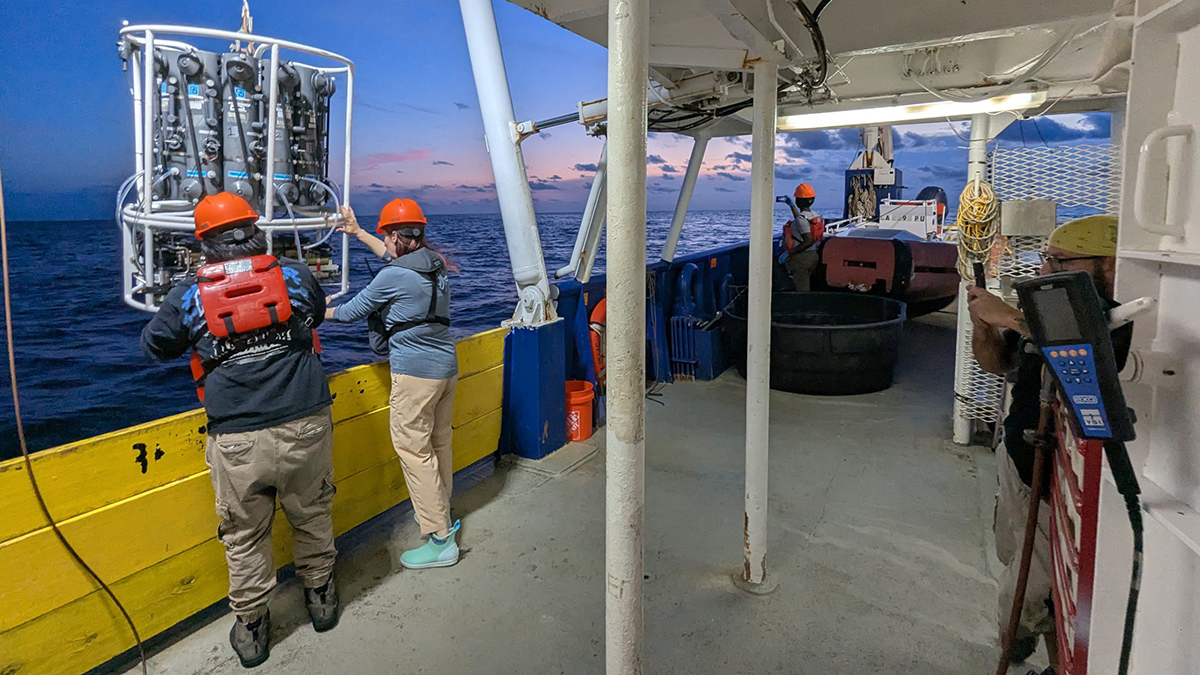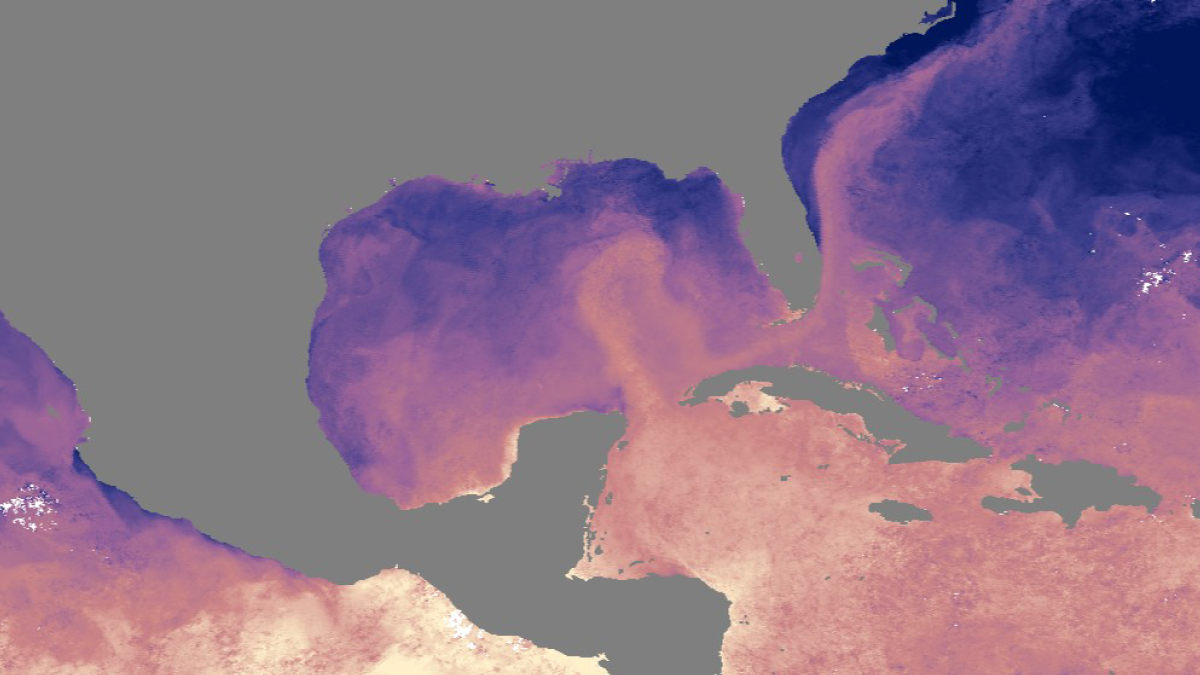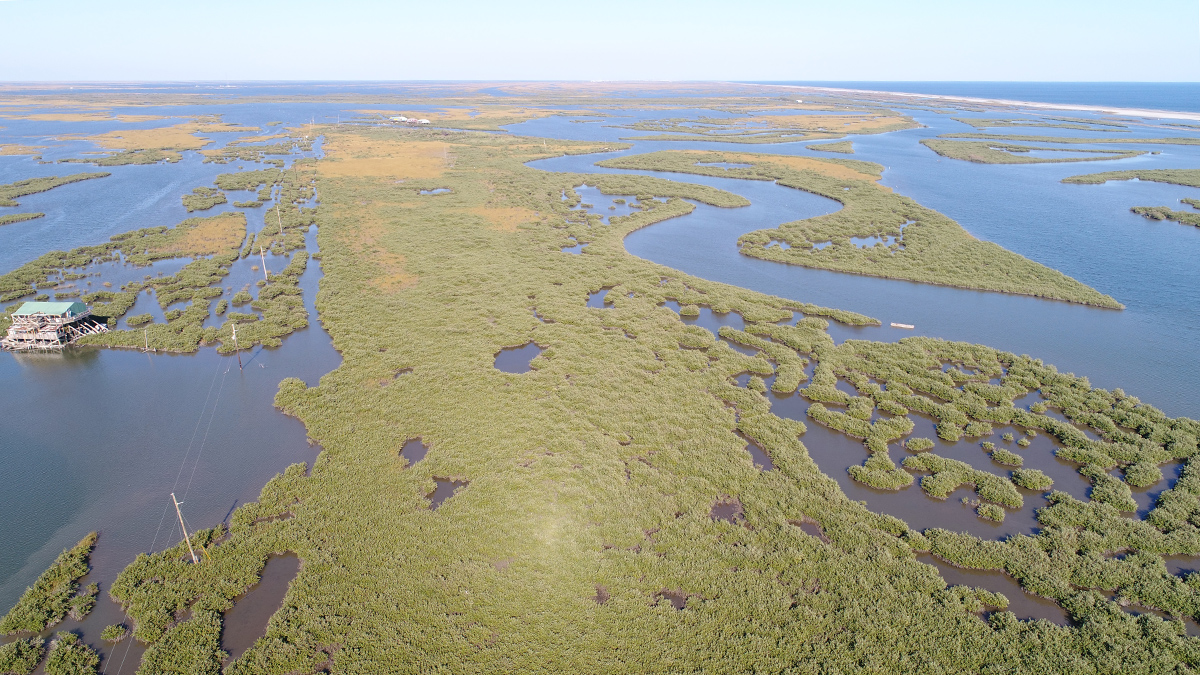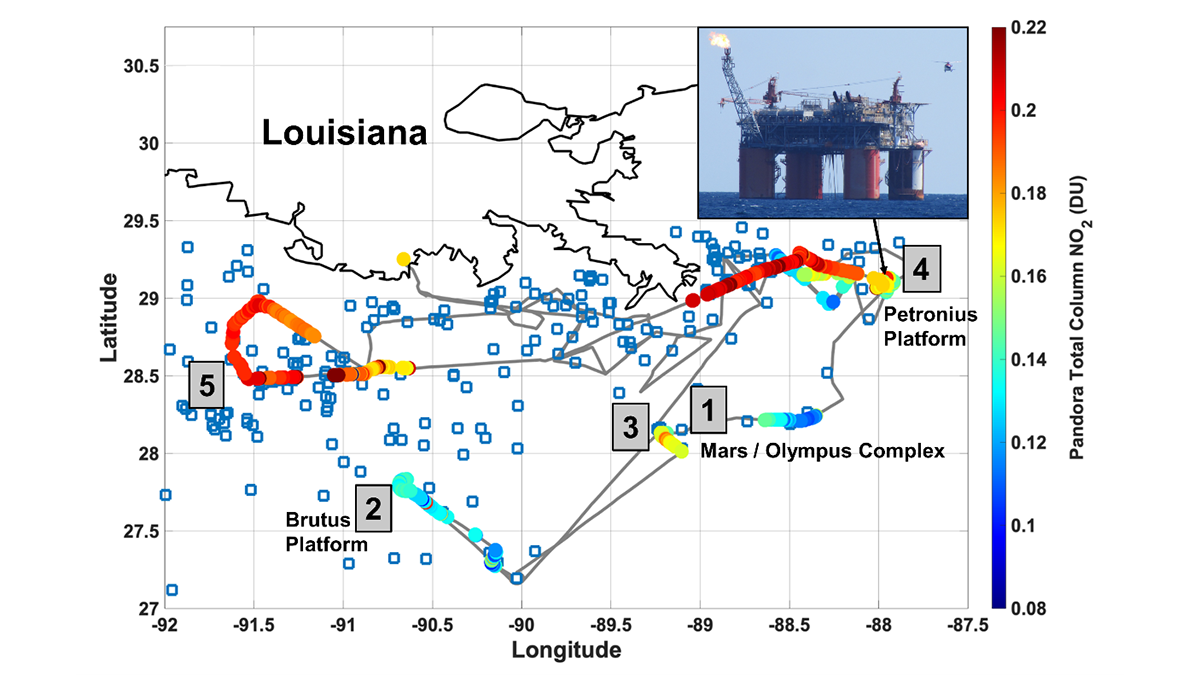Funding cuts are affecting The Pelican’s annual hypoxia cruise to investigate the environmental conditions off the coast of Louisiana.
Gulf of Mexico
Ocean Current Affairs in the Gulf of Mexico
Multinational and multidisciplinary studies of the past and present of the Gulf’s Loop Current are helping to reveal what might be in store for coastal communities.
Two ROVs to Join the U.S. Academic Research Fleet
The midsize remotely operated vehicles, supported by federal grants, will help meet growing demand for submersible research vehicles.
Las olas de calor marinas incrementan la probabilidad de intensificación de las tormentas tropicales
La probabilidad de que los huracanes experimenten una intensificación rápida aumenta en un 50% durante las olas de calor marinas que se desarrollan en el Golfo de México y en la región noroeste del Mar Caribe.
Marine Heat Waves Make Tropical Storm Intensification More Likely
Rapid intensification of hurricanes is 50% more likely to occur during marine heat waves in the Gulf of Mexico and northwestern Caribbean Sea.
Hurricanes May Prune Gulf Mangroves
Tropical storms knock down the tallest trees and stunt the growth of others.
Ocean Pollution Makes Microbes Adapt
Some bacteria thrive in the sometimes-toxic soup of crude oil and chemical dispersants.
Comparing Carbon-Trapping Capacities of Anoxic Basins
Low-oxygen regions in the ocean could be prime spots for sequestering biomass—a potential strategy for fighting climate change. But each site has its pros and cons.
Hurricane Harvey Filled Houston with Sediment
The storm’s record-setting rains moved an equally impressive amount of sediment and elevated the risk and expense of absorbing all that muck.
Remote Sensors See NO2 ‘Hot Spots’ from Offshore Oil Activity
Satellites can see NO2 pollution from space, but can they detect individual oil and natural gas operations, and are the measurements accurate?










